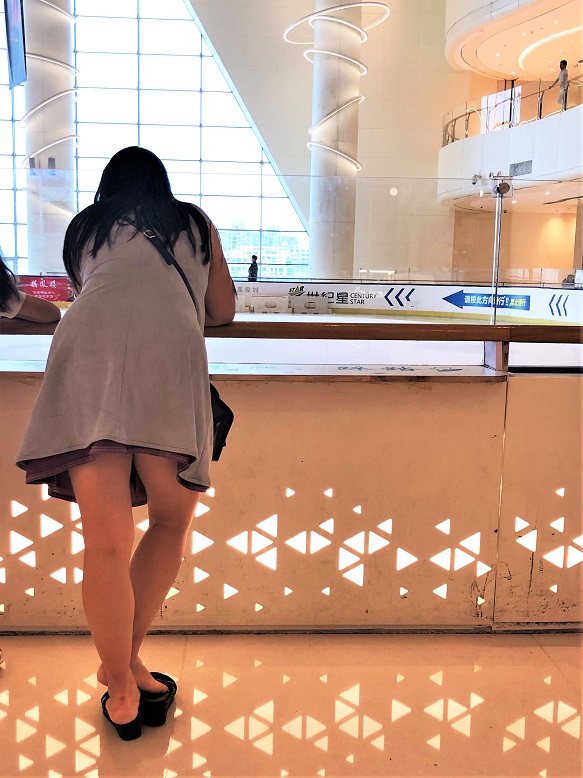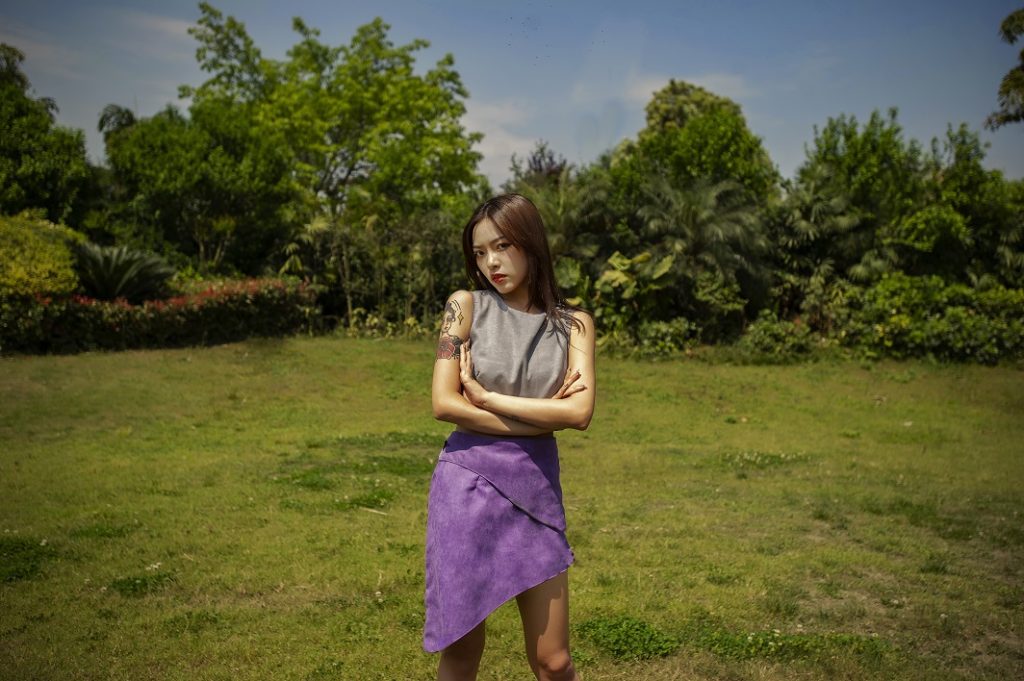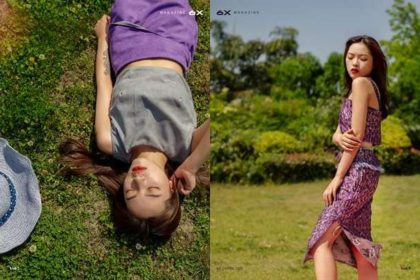
One outfit <=> Several styles!
Fashion, though vital for a life actually worth enjoying, does impact our environment. A contradiction clearly obvious in megalopolis such as Shanghai where Effy By Design is based. With over 20 millions people, fashion is a mark of expression in the crowd; however voluminous consumption results in pollution and piling waste…
To limit volume, without compromising on style and diversity, we designed a flexible clothing line, in which every item can be reversed, folded, wrapped, rolled-in, buttoned, and so on… so more choices -> longer lifespan -> lower volume; and always great versatile styles. At Effy Creations, inspiration is an objective, so here we share five techniques to design flexible women clothing:
- Reversible: the classic two-side fabric approach
- Fold-able: fold / unfold to change pattern and length
- Wrap-around: layers wrapped around to modify style
- Buttoned layers: light add-on that can be buttoned or removed
- Rolled-up layers: decorative layers rolled-up and hidden
1. Reversible: the classic flexible design technique
One of the easiest way to design two styles out of one pattern, the “reversible” method. This technique use two-side fabrics, or two different fabrics, that can alternatively serve as inner / outer side.
This method is already popular within the fashion industry, and common for bags (such as our Two-side reversible handbag series), hats, cardigans or capes. Very little material constraint, various designers also use this approach for their own collection, such as Jia Collection (US versatile clothing brand), Maison Q (Singapore kids clothe) or Isabel Manns (UK designer). To match the Mauving On theme, we used the reversible approach to mix texture and color, just like beautiful blooming flowers.
- “Florescent Violet“: Purple silk <-> Shiny flowery lace
- “Thriving Hellebore“: Light green microfiber <-> Fandango silk
- “Twirling Osteospermum”: Dark blue <-> Grey flower lace
Reversible is a straight forward technique to play with textures and colors and to create clothes that fit multiple environments. On the negative side, sometimes the need to limit the ability to quickly change style.
2. Fold-able technique: Let’s play with length

Fold-able are designs in which part of the garment can fold / unfold to hide or reveal a different style.
For this technique, the fold-able side of the garments will have two-sides, and will be fixed in position with button and / or hooks. For the “Blossoming Jacaranda“, the top unfold from lace bustier to linen top; while the skirt unfold from short skirt into long lace skirt. Two completely different looks, one set of clothe. Folded positions are fixed through hooks on the straps for the top, and buttons + hooks hidden under decorative fringe for the skirt.
From a design perspective, the fold-able method provides more options, playing with sizes on top of color and material; however it requires more attention on sizing to get curves that fit in every position. The bright side is that unlike reversible dress or skirt, fold-able clothing can switch in a blink, anywhere, anytime, making them extremely fun to wear.
3. Wrap-around: Design fun and flexible shapes

Mixing the flexibility of ‘fold-able’ with the ‘reversible’ simple approach: the wrap-around method. Wrapping around is like having an additional two-side layer of fabric that can switch from right to left. That layer is sewed to the natural line of a skirt, dress, brassiere, and so on. By switching side, you switch not only color and material, but size, design and shape as well.
The additional layer can be used to hide and reveal parts of the body. For example on the “Burgeoning Lavender“, on the purple side, the skirt is slightly shorter than on the green side. This is done because the front of the basic skirt (in purple) is shorter than the green wrapping. When wrapped on the green side, the skirt looks longer, covering the front. When it is wrapped on the purple side, that layer covers the back, revealing the shorter purple skirt in the front. Designs can be pushed even further, with more dramatic portions hidden / revealed.
Simple, fun, practical, the wrap-around technique’s only drawback is the additional use of fabric required to create the additional two-side layer.
4. Buttoned layers: Anything happen!

For this approach, pieces of clothe and added / removed from the basic garments with the use of concealed or apparent fixations.
Here at Effy By Design, we kept designs based on add-ons, simply adding / removing layers to create flexible styles. The “Flowering Lavatera” is a good example of that, with decorative buttons to hang layers of lace. Designs can be even more daring, with complete panels of an outfit being fully replaceable (such as clothing from Proud Fox for example).
5. Rolled-up layers: Curtained styles

Last method we used on the Mauving On collection, is the rolled-up approach. The idea here is to conceal / unroll a decorative element, to add a layer and give flexible styling options. For the “Blooming Lilac” skirt, a layer of lace is rolled-up inside the belt, adding a delicate lace over the strong pu skirt.
Let’s design flexible clothing
We’re having fun so far with this collection and the reception has been great so far. At Effy Creations we’re all about sharing ideas and inspiring each other, so we hope these five techniques to design flexible women clothing will inspire you to create your own flexible outfits. Do share with us your creations!






















[…] “Flexible is sustainable” […]
[…] “Flexible is sustainable” […]
[…] Techniques to design flexible fashion […]
[…] Techniques to design flexible fashion […]